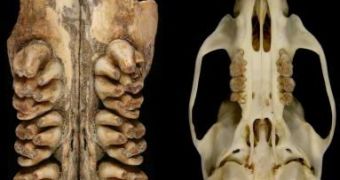The bones of the biggest rat that ever lived were discovered in East Timor. Researchers estimated that the rat weighed about 6 kg and it had survived until around 1000 to 2000 years ago. The excavations also revealed another 13 species of rodent, of which 11 are unknown. Also, eight of the rats weighed a kilogram or more.
CSIRO's Dr Ken Aplin says that “East Indonesia is a hot spot for rodent evolution. We want international attention on conservation in the area. Rodents make up 40 per cent of mammalian diversity worldwide and are a key element of ecosystems, important for processes like soil maintenance and seed dispersal. Maintaining biodiversity among rats is just as important as protecting whales or birds.”
Most uncovered species lived up to 2000 years ago, and only a smaller specie can still be found in Timor today. Dr Aplin says that “people have lived on the island of Timor for over 40,000 years and hunted and ate rats throughout this period, yet extinctions did not occur until quite recently. We think this shows people used to live sustainably on Timor until around 1000 to 2000 years ago. This means extinctions aren't inevitable when people arrive on an island. Large scale clearing of forest for agriculture probably caused the extinctions, and this may have only been possible following the introduction of metal tools.”
On every island of Eastern Indonesia specific species of rats can be found. Another six species have been found on the island of Flores, by Dr Aplin's team, and some might still be living today on the island.
Very few native mammals can be found on Timor, as bats and rodents are the major species and most or the island is waterless. “Although less than 15 per cent of Timor's original forest cover remains, parts of the island are still heavily forested, so who knows what might be out there?” says Dr Aplin. “During a recent field trip in East Timor, I found the remains of a freshly dead rat which we knew about only from cave deposits.”
The biggest rats nowadays can be found in rainforests in the Philippines and New Guinea, and weigh about 2 kg.
Ken Aplin of CSIRO and Kris Helgen of the Smithsonian Institution published “Quaternary murid rodents of Timor” in this week's Bulletin of the American Museum of Natural History.

 14 DAY TRIAL //
14 DAY TRIAL //